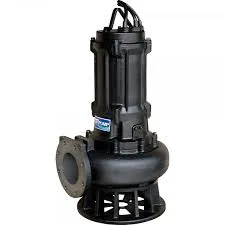English
- Afrikaans
- Albanian
- Amharic
- Arabic
- Armenian
- Azerbaijani
- Basque
- Belarusian
- Bengali
- Bosnian
- Bulgarian
- Catalan
- Cebuano
- Corsican
- Croatian
- Czech
- Danish
- Dutch
- English
- Esperanto
- Estonian
- Finnish
- French
- Frisian
- Galician
- Georgian
- German
- Greek
- Gujarati
- Haitian Creole
- hausa
- hawaiian
- Hebrew
- Hindi
- Miao
- Hungarian
- Icelandic
- igbo
- Indonesian
- irish
- Italian
- Japanese
- Javanese
- Kannada
- kazakh
- Khmer
- Rwandese
- Korean
- Kurdish
- Kyrgyz
- Lao
- Latin
- Latvian
- Lithuanian
- Luxembourgish
- Macedonian
- Malgashi
- Malay
- Malayalam
- Maltese
- Maori
- Marathi
- Mongolian
- Myanmar
- Nepali
- Norwegian
- Norwegian
- Occitan
- Pashto
- Persian
- Polish
- Portuguese
- Punjabi
- Romanian
- Russian
- Samoan
- Scottish Gaelic
- Serbian
- Sesotho
- Shona
- Sindhi
- Sinhala
- Slovak
- Slovenian
- Somali
- Spanish
- Sundanese
- Swahili
- Swedish
- Tagalog
- Tajik
- Tamil
- Tatar
- Telugu
- Thai
- Turkish
- Turkmen
- Ukrainian
- Urdu
- Uighur
- Uzbek
- Vietnamese
- Welsh
- Bantu
- Yiddish
- Yoruba
- Zulu
Telephone: +86 13120555503
Email: frank@cypump.com
Sep . 05, 2024 08:11 Back to list
plumbing sewage ejector pump
Understanding Plumbing Sewage Ejector Pumps Essentials for Homeowners
When it comes to managing wastewater in residential and commercial properties, plumbing sewage ejector pumps play a critical role. These specialized pumps are designed to transport sewage and wastewater from lower to higher elevations within a plumbing system, ultimately directing the waste to a municipal sewer line or septic tank. Understanding how these systems work is essential for homeowners, particularly those with basements or lower levels that are below the sewer line.
What is a Sewage Ejector Pump?
A sewage ejector pump is a type of pump used to lift and move sewage from a lower elevation to a higher elevation. Typically installed in a pit, known as a basin or sump, the pump activates when the wastewater reaches a certain level within the basin. The sewage ejector pump then uses a motorized mechanism to force the waste through the pipes leading to the sewage system.
Key Components of a Sewage Ejector Pump
1. Pump Body The main component that houses the motor and impeller, responsible for creating the necessary pressure to move the sewage. 2. Float Switch A critical safety feature that detects the water level within the basin. When the water reaches a specified height, the float switch activates the pump. 3. Check Valve Prevents the backflow of sewage into the basin once the pump has ejected it, ensuring that the system remains sanitary and functional. 4. Discharge Pipe The pipe through which the sewage is expelled from the pump to the sewer system.
How Does a Sewage Ejector Pump Work?
plumbing sewage ejector pump

The process begins when wastewater—comprising liquid waste from toilets, sinks, and other drains—accumulates in the pump basin. As the water level rises, the float switch is triggered, activating the pump motor. Once operational, the pump impeller spins and generates pressure, pushing the sewage through the discharge pipe and up to the higher elevation of the sewage line.
This system is particularly beneficial for homes with basements, which are often lower than the main sewer line, making gravity drainage impossible. Sewage ejector pumps are also used in applications like laundry rooms, bathrooms, and any area where drains are situated below the main sewer line level.
Maintenance and Troubleshooting
Regular maintenance is essential to ensure the longevity and functionality of a sewage ejector pump. Homeowners should inspect the system periodically for any blockages, debris accumulation, or unusual noises which may indicate a malfunction. It is advisable to keep a maintenance log and schedule professional inspections at least once a year to check the pump’s performance.
If problems arise—such as the pump not activating or continuous running without discharging waste—homeowners should first check the float switch for proper operation. If the float switch is functioning correctly, the next step is to examine the electrical connections and check for any clogs in the discharge pipe.
Conclusion
In summary, plumbing sewage ejector pumps are vital for managing wastewater in homes and buildings with lower-level plumbing fixtures. Understanding their function, components, and the importance of maintenance can help homeowners prevent costly repairs and ensure a hygienic environment. By being proactive and informed, you can keep your sewage system running smoothly for years to come.
-
Horizontal Split Case Pump with GPT-4 Turbo | High Efficiency
NewsAug.01,2025
-
ISG Series Pipeline Pump - Chi Yuan Pumps | High Efficiency, Durable Design
NewsAug.01,2025
-
Advanced Flue Gas Desulfurization Pump with GPT-4 Turbo | Durable & Efficient
NewsJul.31,2025
-
ISG Series Vertical Pipeline Pump - Chi Yuan Pumps | Advanced Hydraulic Design&Durable Construction
NewsJul.31,2025
-
ISG Series Vertical Pipeline Pump - Chi Yuan Pumps | Energy Efficient & Low Noise
NewsJul.31,2025
-
pipeline pump - Chi Yuan Pumps Co., LTD.|High Efficiency&Low Noise
NewsJul.31,2025










